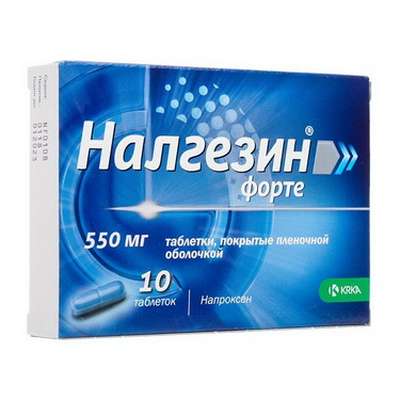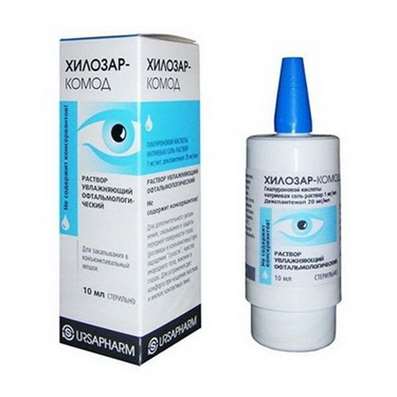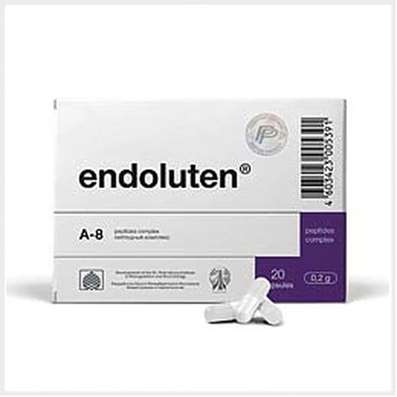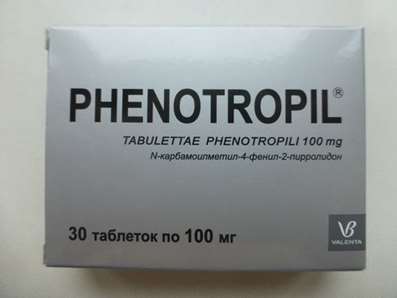Instruction for use: Humira
I want this, give me price
Dosage form: Solution for subcutaneous administration
Active substance: Adalimumabum
ATX
L04AB04 Adalimumab
Pharmacological group:
Immunodepressants
The nosological classification (ICD-10)
L40.5 Arthropathy psoriasis (M07.0-M07.3 *, M09.0 *): Psoriatic arthritis; Arthropathic form of psoriasis
M06.9 Rheumatoid arthritis, unspecified: Rheumatoid arthritis; Pain syndrome in rheumatic diseases; Pain in rheumatoid arthritis; Inflammation in rheumatoid arthritis; Degenerative forms of rheumatoid arthritis; Children's rheumatoid arthritis; Exacerbation of rheumatoid arthritis; Acute articular rheumatism; Rheumatic arthritis; Rheumatic polyarthritis; Rheumatoid arthritis; Rheumatic polyarthritis; Rheumatoid arthritis; Rheumatoid arthritis; Rheumatoid arthritis of active course; Rheumatoid periarthritis; Rheumatoid polyarthritis; Acute rheumatoid arthritis; Acute rheumatism
M07.3 Other psoriatic arthropathies (L40.5 +): Psoriatic arthritis; Generalized form of psoriatic arthritis; Psoriatic arthritis
M45 Ankylosing spondylitis: Ankylosing spondylarthrosis; Marie-Strumpel disease; Ankylosing spondylitis; Ankylosing spondylitis; Pain syndrome in acute inflammatory diseases of the musculoskeletal system; Pain syndrome in chronic inflammatory diseases of the musculoskeletal system; Bechterew's disease; Ankylosing spondylitis; Diseases of the spinal column; Rheumatic spondylitis; Bechterew-Marie-Strumpel disease
Composition and release form
Solution for subcutaneous administration 1 syringe
Adalimumab 40 mg
Auxiliary substances: mannitol, citric acid monohydrate, sodium citrate, disodium hydrogen phosphate dihydrate, sodium dihydrogen phosphate dihydrate, sodium chloride, polysorbate 80, water d / i, sodium hydroxide
In contour mesh containers 1 single-dose glass syringe with 0,8 ml (complete with alcohol wipe); In a pack of cardboard 1 or 2 packs.
Description of dosage form
The solution for the sc administration is opalescent, slightly colored.
Pharmachologic effect
Mode of action - Immunosuppressive.
Pharmacodynamics
Selective immunosuppressant. It is a recombinant monoclonal antibody whose peptide sequence is identical to human lgG1.
Adalimumab selectively binds to tumor necrosis factor (TNF) and neutralizes its biological functions through blockade of interaction with surface cellular p55 and p75 receptors to TNF. TNF is a natural cytokine that is involved in the regulation of a normal inflammatory and immune response. Elevated levels of TNF are found in synovial fluid in patients with rheumatoid arthritis, psoriatic arthritis and ankylosing spondylitis. TNF plays an important role in the development of pathological inflammation and destruction of the articular tissue, characteristic of these diseases.
Adalimumab also modulates biological responses that are induced or regulated by TNF, including changes in levels of adhesion molecules that cause migration of leukocytes.
In patients with rheumatoid arthritis, Humira causes a rapid decrease in the levels of acute phase parameters of inflammation (C-reactive protein and ESR) and serum levels of cytokines (IL6). In addition, there is a decrease in the serum activity of matrix metalloproteinases (MMP-1 and MMP-3), causing tissue remodeling, which underlies cartilage destruction.
Pharmacokinetics
Suction. Adalimumab is absorbed and distributed slowly and reaches Cmax after about 5 days. Absolute bioavailability of the drug with a single SC administration of 40 mg adalimumab is 64%.
Distribution. CSS adalimumab with p / k application in a dose of 40 mg once every 2 weeks in patients with rheumatoid arthritis at the end of the dosing interval is about 5 μg / ml (without simultaneous reception of methotrexate) and 8-9 μg / ml (against the background of simultaneous use of methotrexate) . With an increase in the dose of adalimumab in the range of 20, 40 and 80 mg once every 2 weeks and once a week, there was an almost linear increase in serum concentrations at the end of the dosing interval.
The apparent volume of distribution (Vd) with a single IV injection is 4.7 to 6.0 liters, indicating an almost identical distribution of adalimumab in the blood and in extravascular fluids. The concentration of adalimumab in the synovial fluid of patients with rheumatoid arthritis ranges from 31 to 96% of serum.
Excretion. Adalimumab is withdrawn slowly, clearance usually does not exceed 12 ml / h. T1 / 2 is, on average, 2 weeks and varies from 10 to 20 days. Clearance and T1 / 2 do not change significantly when the drug is administered at a dose of 0.25-10 mg / kg, and T1 / 2 is similar for IV and / or injection of the drug. With prolonged use (more than 2 years), the clearance of adalimumab does not change.
Pharmacokinetics in special clinical cases
There is a tendency to increase the clearance of adalimumab, depending on the body weight and the presence of antibodies to it.
Age has minimal effect on the clearance of adalimumab. In children, the pharmacokinetics of adalimumab have not been studied.
Differences in pharmacokinetics (adjusted for body weight) in patients of different sex and race were not revealed.
Information on the pharmacokinetics of adalimumab in patients with impaired liver or kidney function is absent.
Indication of the drug Humira
Moderate and severe active rheumatoid arthritis (in monotherapy or in combination with methotrexate or other basic anti-inflammatory drugs);
Active psoriatic arthritis (in monotherapy or in combination with methotrexate or other basic anti-inflammatory drugs);
Active ankylosing spondylitis.
Contraindications
Increased sensitivity to adalimumab or any of its auxiliaries;
Infectious diseases, including tuberculosis;
pregnancy;
Lactation period (breastfeeding);
Children and adolescence up to 16 years.
With caution should prescribe the drug in demyelinating diseases.
Application in pregnancy and breastfeeding
In experimental studies on animals in doses up to 100 mg / kg, there were no signs of damaging effect of adalimumab on the fetus. However, in adequate controlled studies in pregnant women, the drug has not been studied. Experiments on animals do not always allow predicting the effect on a person, therefore during pregnancy Humir can be used only in case of emergency.
Women of reproductive age should avoid conception during treatment with Humira.
Humir's effects on labor and delivery are unknown.
Information on the excretion of adalimumab with breast milk or its absorption after ingestion is not present. Many medicinal substances and immunoglobulins penetrate into breast milk. Given the risk of developing serious adverse reactions in the newborn, it is advisable to stop breastfeeding or to cancel the drug, taking into account its importance for the mother.
Side effects
Below are the data on Humir's safety obtained in placebo-controlled clinical trials.
Clinical and laboratory adverse events, the association of which with adalimumab was at least possible, are distributed according to systems and frequency: very often ≥1 / 10; Often - ≥1 / 100, but <1/10; Infrequently, ≥1 / 1000, but <1/100.
Infections: very often - an infection of the upper respiratory tract; Often - infection of the lower respiratory tract (including pneumonia and bronchitis), urinary tract infection, herpetic infection (including simple and herpes zoster), influenza, superficial fungal infection (including skin and nail lesions); Infrequently, sepsis, joint and wound infections, abscess, skin infection (including impetigo), hair follicle infection (including furuncles and carbuncles), paronychia, pustular rash, tooth and periodontal infection, ear infection, gastroenteritis, candidiasis of the mouth and pharynx, vaginal Infection (including fungal), viral infection.
Neoplasms: infrequently - papilloma of the skin.
From the hemopoietic system: often - anemia, lymphopenia; Infrequently - leukopenia, leukocytosis, lymphadenopathy, neutropenia, thrombocytopenia.
From the immune system: infrequently - hypersensitivity reactions, seasonal allergies.
From the side of metabolism: infrequently - hypercholesterolemia, hyperuricemia, anorexia, decreased appetite, hyperglycemia, increased or decreased body weight.
From the central nervous system and peripheral nervous system: often - headache, dizziness, paresthesia; Infrequently - depression, anxiety disorders (including nervousness and agitation), insomnia, confusion, taste distortion, migraine, drowsiness, syncope, neuralgia, tremor, neuropathy.
From the senses: infrequently - conjunctivitis, blepharitis, pain, redness, dry eyes, eyelid edema, glaucoma, pain, congestion and ringing in the ears.
From the side of the cardiovascular system: often - arterial hypertension; Infrequently - hot flashes, bruises, tachycardia, palpitation.
On the part of the respiratory system: often - cough, sore throat, nasal congestion; Infrequently - dyspnea, asthma, dysphonia, pulmonary crepitus, ulceration of the nasal mucosa, edema of the upper respiratory tract, reddening of the throat.
On the part of the digestive system: often - nausea, abdominal pain, diarrhea, dyspepsia, ulceration of the oral mucosa, increased activity of hepatic enzymes (including ALT and AST), APF; Infrequent - vomiting, flatulence, constipation, gastroesophageal reflux, dysphagia, gastritis, colitis, hemorrhoids, hemorrhoidal bleeding, vesicular rash in the oral cavity, toothache, dry mouth, gingivitis, ulceration of the tongue, stomatitis (including aphthous).
Dermatological reactions: often - a rash (including erythematous and itchy), skin itching, hair loss; Infrequent - macular or papular rash, dry skin, sweating, night sweats, eczema, dermatitis, psoriasis, urticaria, ecchymosis, purpura, acne, skin ulcers, angioedema, nail plate change, photosensitivity reactions, skin peeling, rheumatoid nodules.
From the musculoskeletal system: infrequently - arthralgia, pain in the extremities, pain in the back and shoulder girdle, muscle cramps, myalgia, joint swelling, synovitis, bursitis, tendonitis.
From the genitourinary system: infrequently - hematuria, dysuria, nocturia, pollakiuria, pain in the kidney, menorrhagia
On the part of the body as a whole: often - increased fatigue (including asthenia), influenza-like syndrome; Infrequently - fever, heat, chills, chest pain, worsening of wound healing.
Local reactions: very often - pain, swelling, hyperemia, itching at the injection site.
On the part of laboratory indicators: infrequently - increased triglycerides, CK, LDH, urea and creatinine in the blood, an increase in APTT, a decrease in the level of potassium in the blood, the formation of autoantibodies, the appearance of protein in the urine.
Interaction
Methotrexate in single and repeated administration reduces the clearance of adalimumab by 29% and 44%, respectively. But in patients with rheumatoid arthritis who receive methotrexate, there is no need to adjust the dose of adalimumab or methotrexate.
The interaction of adalimumab with other drugs, in addition to methotrexate, has not been studied in pharmacokinetic studies.
In clinical studies, there were no signs of interaction between adalimumab and other basic agents (sulfasalazine, hydrochlorochine, leflunomide and parenteral preparations of gold), GCS, salicylates, NSAIDs and analgesics.
Dosing and Administration
SC, in the abdomen or anterior surface of the thigh. Before administration, inspect the solution for foreign matter and discoloration.
Adults with rheumatoid arthritis, psoriatic arthritis and ankylosing spondylitis Humir is prescribed in a dose of 40 mg once every 2 weeks. When Humira is prescribed, GCS, NSAIDs, analgesics, salicylates, methotrexate and other basic drugs can be continued.
In some patients who do not receive methotrexate, an additional effect can be achieved with an increase in the frequency of Humir application to 40 mg once a week.
Rules for preparation and injection of the drug
Humirae should be administered under the supervision of a doctor. If the doctor believes this is possible, then after appropriate training in the technique of injections, patients can independently administer the drug themselves.
Adalimumab should not be mixed in one syringe or vial with any other medications. Remains of the solution and used materials should be destroyed.
Before Humira injection, one should get out of the package and put on a clean surface one syringe with Humira and one alcohol-soaked napkin. Make sure that the period of Humir's storage indicated on the syringe has not expired.
Choose a site for injection on the abdomen or the front surface of the thigh. Place injection and side should be changed, each next injection site should deviate from the previous at least 2 cm. Do not administer the drug to a place where there is hyperemia, compaction, or subcutaneous hematoma. These signs may indicate an infection. Place the injection must be treated with an alcoholic napkin in circular motions.
Next, remove the cap from the needle, one hand collect the skin in the fold, the other hand, take the syringe, holding it at an angle of 45 ° to the surface of the skin, graduated with the surface up. With one quick movement, fully insert the needle into the skin fold. After inserting the needle, fold the skin off. Enter the entire solution within 2-5 seconds. When the syringe is empty, remove the needle from the skin, at the same angle. With a piece of gauze, squeeze the injection area lightly for 10 seconds, but do not rub the surface in any way. A small amount of blood can be released from the injection site. If you want, you can use a band-aid.
If another injection of Humira was accidentally missed, it is necessary to inject immediately, as soon as it is detected. The next injection should be made in accordance with the schedule previously planned.
Overdose
The maximum tolerated dose of adalimumab in humans is not established. Repeated use of adalimumab in doses up to 10 mg / kg was not accompanied by toxic effects, which required a dose reduction.
Treatment: In case of an overdose, it is necessary to monitor adverse reactions and immediately begin adequate symptomatic treatment.
Special instructions
In the treatment of monoclonal antibodies to TNF, including Humir, serious infections, rare cases of tuberculosis and opportunistic infections were observed, incl. With a lethal outcome. In many cases, serious infectious processes developed in patients who received concomitant immunosuppressive therapy. Rheumatoid arthritis itself predisposes to the development of infectious complications.
Humir should not be prescribed to patients with active infections, incl. Chronic or focal. Treatment can be started only after infection control is achieved.
As with other monoclonal anti-TNF antibodies, before, during and after Humira therapy, signs of infection, including tuberculosis, should be monitored.
With the development of a new infection on the background of Humirote therapy, patients should be carefully monitored. In severe cases, treatment with Humira should be discontinued. It can only be resumed after infection control has been achieved.
Care must be taken when discussing the appointment of Humira to patients with recurrent infections in the anamnesis or diseases predisposing to the development of infectious complications.
The use of monoclonal antibodies to TNF may be accompanied by the reactivation of the hepatitis B virus (HBV) in infected carrier carriers of this virus. Several cases of a lethal outcome due to the reactivation of the hepatitis B virus when using TNF blockers are described. In most cases, activation of HBV has been observed in patients receiving, in addition to TNF blockers, concomitant immunosuppressive therapy. Patients at risk for hepatitis B should be carefully examined for HBV before prescribing monoclonal antibodies to TNF. The question of prescribing HBV therapy to TNF blockers should be addressed in the light of the possible risk to the patient. In the case of the administration of monoclonal antibodies to TNF to a carrier of HBV, the patient should be carefully monitored throughout the course of therapy and several months after its completion. If against the background of Khumira's application, the hepatitis B virus was reactivated, it is necessary to stop treatment with Humira and start effective antiviral therapy.
Therapy with monoclonal antibodies to TNF, including Humira, was rarely accompanied by the appearance or exacerbation of clinical and / or radiological manifestations of demyelinating diseases. Doctors should be careful when Humira is prescribed to patients with demyelinating CNS diseases.
In controlled trials, the incidence of malignant tumors, including lymphoma, in patients receiving monoclonal antibodies to TNF was higher than in control patients. The total number of patients receiving placebo and the duration of follow-up were less than the number and duration of follow-up of patients receiving TNF blockers. In addition, the risk of developing lymphoma is increased in patients with rheumatoid arthritis, accompanied by chronic highly active inflammation, which makes it difficult to assess its risk against the background of treatment. In long clinical studies by Humira, the incidence of malignant growth was consistent with this parameter in patients of the same age, sex, and race in the general population. However, the data available to date is not sufficient to exclude the possible risk of developing lymphoma or other malignant tumors against the background of monoclonal antibodies to TNF therapy.
Clinical studies did not include patients with malignant tumors in the anamnesis, and in the case of tumor development, Khumiro's therapy was discontinued. Accordingly, special care must be taken when deciding on the treatment of Humira in such patients.
In clinical studies, serious allergic reactions against the background of Humir's use were rare. In clinical practice, very rare cases of serious allergic reactions (including anaphylactic) have been registered after the introduction of Humira. If anaphylaxis or other severe allergic reaction develops, then you should immediately stop treatment with Humira and prescribe the appropriate treatment.
The needle cap of the syringe that is injected with the drug contains latex, which can cause severe allergic reactions in patients with hypersensitivity to latex.
In clinical studies of Humira and other similar drugs, cases of tuberculosis development have been documented. They were observed with the drug in any doses, but the frequency of reactivation of tuberculosis increased mainly when Humira was prescribed in doses exceeding the recommended levels. In patients taking Humira, cases of fungal and other opportunistic infections have been described. Some of these infections, including tuberculosis, have been fatal.
Before starting treatment, Humira of all patients should be examined to exclude active and inactive (latent) tuberculosis. It is necessary to collect a detailed medical history, incl. To find out the presence of contacts with patients with active tuberculosis and to clarify whether immunosuppressive therapy has been carried out and / or carried out. Screening studies should be carried out (for example, chest radiography and a tuberculin test). It is necessary to take into account the possibility of false-negative tuberculin samples, especially in critically ill patients and patients with immunodeficiency.
If active tuberculosis is diagnosed, Humid should not begin treatment.
With latent tuberculosis, before starting treatment with Humira, antituberculous preventive treatment should be performed.
Patients should be informed of the need to consult a doctor if signs of tuberculosis infection appear (persistent cough, weight loss, subfebrile fever).
In the treatment of TNF blockers, rare cases of pancytopenia have been described, including aplastic anemia. When Humira was appointed, adverse events from the hematopoiesis system, including clinically significant cytopenia (thrombocytopenia, leukopenia), were infrequently recorded. Their connection with Khumira remains unclear. Patients should immediately consult a doctor when symptoms of a blood disorder occur (such as persistent fever, bruises, bleeding, pallor) on the background of treatment with Humira. In patients with severe changes in blood composition, consideration should be given to the abolition of Humira.
In clinical trials with the simultaneous use of anakinra and the blocker of TNF etanercept, the development of serious infections was noted with no additional clinical effect compared to ethanercept monotherapy. Given the nature of adverse events that develop with combined therapy with anakinro and etanercept, similar effects can be expected with anakinro treatment in combination with other TNF blockers. In this regard, combined therapy with adalimumab and anakinro is not recommended.
In a study of 64 patients treated with Humira, there was no evidence of inhibition of delayed-type hypersensitivity reactions, a decrease in immunoglobulin levels or changes in the number of effector T cells, B cells and NK cells, monocytes / macrophages, and neutrophils.
Patients receiving Humira may be vaccinated (except live vaccines). Information about the possibility of infection when vaccinated with live vaccines against the background of treatment Khumira no.
Humira was not specifically studied in patients with chronic heart failure, but in clinical studies of another antagonist of TNF, there was an increase in the incidence of progression of chronic heart failure and the development of new cases of it. Cases of increasing heart failure are also described in patients receiving Humira. With caution and under careful medical supervision, Humira should be prescribed to patients with heart failure.
The therapy of Humira may be accompanied by the formation of autoantibodies. The influence of prolonged use of Humira on the development of autoimmune diseases is not known. Humira should be canceled if the patient develops signs of lupus-like syndrome in the course of treatment.
Information about the influence of Humira on the results of laboratory tests there.
Safety and efficacy in older and younger patients do not generally differ. Nevertheless, it is impossible to exclude hypersensitivity to the drug in some elderly patients.
Use in pediatrics. Safety and effectiveness of Humira in children have not been studied.
Storage conditions of the drug Humira
In the dark place at a temperature of 2-8 ° C (do not freeze).
Keep out of the reach of children.
Shelf life of the drug Humira
2 years.
Do not use after the expiry date printed on the package.

 Cart
Cart





